

http://desistfilm.com/
Manifesto
 Avant–garde,
experimental, underground, independent cinema. Film that surpasses the
frontiers of convention, that promotes a vision of what cinema gives to
our lives, how it changes us, how it questions us, how it confronts us.
Avant–garde,
experimental, underground, independent cinema. Film that surpasses the
frontiers of convention, that promotes a vision of what cinema gives to
our lives, how it changes us, how it questions us, how it confronts us.Film journalism
that isn’t masturbatory
solipsism
an onanism.
Film criticism as the next logical step of true cinephilia and film discussion, the bridge between our eyes and thoughts, the act of writing about cinema as a permanent way of dialogue.
Mónica Delgado
+++
The pursuit of cinema as a true erotic act: Beautiful, disgusting, and filthy. Cinema is kiss, yet also blood, saliva, sweat, tears, semen. Cinema is ecstasy, yet also pain, discomfort, clumsiness. In the act of cinema (that amazing oxymoron) we are revealed.
José Sarmiento Hinojosa
+++
A well-shaped idea can give life to sublime works; sublime movies are both ideas and shapes.
Cinema is love, often. And beauty, sometimes.
I adore cinema as moving life, still life, a selfish act of love, visual violence, iconoclastic tableaux vivant, awakening a dream of death, an explicit sex crime, an archives’ voyeurism.
A movie worthy to see has at least 1 frame, it isn’t a matter of movement anymore. I’m not forgetting the semantic meaning of the word cinema, I’m overcoming it. If the ‘word’ is dead, like De Stijl artists said, image is still alive.
desistfilm project is a collective act of love and a journey toward the obscure and desolate lands of cinema. For our beloved audience we risk daily the cut of the eye.
Narda Liotine
+++
desistfilm. Cinema in its mountainous dreams and certainty of existence, every nuance, every axis and towering truth, the image; the splintered labyrinth. To vulgarity, to thirst, to discovering there is poetry in the mundane, we are all of us alive in cinema, in all its flaws and shivering plains.
Catherine Beed
+++
We dream, an audience of shadows
In platinum and chiaroscuro.
A nightworld glimmer
That catches and dies in the infinite unwinding of the reels.
Twenty-four frames per second—
An endless repertory of escapes
When we have exhausted our own.
Love and reunion
As we sit in silent disconnect.
The screen itself is indifferent.
It glows and fades.
We disappear.
“The Cinema is cruel, like a miracle.”— Frank O’Hara
Sarah Nichols
+++
Jump your sprocket. If this means slowing down the film, running it backwards or zooming in on a tiny detail, so be it. A consideration of the medium’s formal and technical properties is not incompatible with a profound emotional experience.
John A. Riley
+++
You enter a dark room, as dark as night. Your eyes follow tiny lights as shadows envelop you. You follow that blurred, grim and pale shadow deep into the edge of everything, into a place without a place, time without time, into a human without a body. A transparent current floats through you. Despite the long distance between you and the screen, you feel closer to the deepest and darkest dream you’ve ever had, closer to invented and fake memories, closer to an oppressed and forgotten history, and, when the film ends, closer to yourself. That’s what cinema is.
Then the lights come up. You come back to your own plain, boring world. In the end you remember nothing but the darkness. Time flies; days, weeks, years. The film comes back to you, a shadow flickering
in your head. A glimpse of things you cannot describe. Nothing you can catch up with, just the glimpse itself.
That’s the way the cinema plays tricks on you.
Wiwat Lertwiwatwongsa
+++
Working in the arts means you are pursuing a trade.
Art is personal and the personal is political.
Art is not based on your opinion but on your knowledge.
After all: Art is about beauty and your personal need to share.
Claudia Siefen
+++
Cinema is the form of thought that mankind has invented
to understand every image which it lives with
and every time that it has gone through.
Ricardo Adalia Martín
+++
Cinema should (make you burn, disgusted, bored, restless)
remind you that you are still breathing.
Lauren Bliss
+++
DESISTFILM: OUR TOP FILMMAKERS

With 13 votes:
John Cassavetes
With 12 votes:
Robert Bresson, Jean-Luc Godard, Chris Marker
With 10 votes:
Michelangelo Antonioni, Chantal Akerman
With 9 votes:
Claire Denis, Rainer Werner Fassbinder, Abbas Kiarostami
With 8 votes:
Ingmar Bergman, Philippe Garrel, Yazujiro Ozu, Andrei Tarkovsky, Apichatpong Weerasethakul
With 7 votes:
Philippe Grandrieux , Werner Herzog, Tsai Ming-Liang
With 6 votes:
Luis Buñuel, Stan Brakhage, Maya Deren,
Carl Theodor Dreyer, Marguerite Duras, Jean Eustache, Hou
Hsiao-Hsien, Wong Kar-Wai, Sergei Paradjanov, Maurice Pialat, Bela
Tarr, Koji Wakamatsu
With 5 votes:
Pedro Costa, Vera Chytilova, Víctor
Erice, Michael Haneke, Alfred Hitchcock, Jean Renoir, Alain Resnais,
Jacques Tourneur, Agnes Varda, Jean Vigo, Frans Zwartjes, Andrzej
Zuwalski
With 4 votes:
Lisandro Alonso, Charlie Chaplin, Lav
Díaz, Bruno Dumont, Forough Farrokhzad, Howard Hawks, Ken Jacobs, Fritz
Lang, Ernst Lubitsch, Ida Lupino, Mikio Naruse, Alexander Sokurov,
Jean-Marie Straub and Danielle Huillet, Luchino Visconti, Glauber
Rocha, Orson Welles, Max Ophuls, Jerry Lewis, John Gianvito, Nagisha
Oshima, Barbara Loden
With 3 votes:
Bejamin Christensen, F.W. Murnau, Jonas
Mekas, Harun Farocki, Jia Zhang-ke, Yervant Gianikian and Angela Ricci
Lucci, Derek Jarman, Krzystof Kieslowski, Eric Rohmer, David Lynch,
David Cronenberg, Alexander Hammid, Sam Fuller, Todd Haynes, Monte
Hellman, Abel Ferrara, Roberto Rossellini, Akira Kurosawa, Toshio
Matsumoto, James Benning, Buster Keaton, Peter Tscherkassky, Nicholas
Ray
With 2 votes:
Stanley Kubrick, Jean Rouch, The
Dardenne Brothers, Gregg Araki, Charles Laughton, José Luis Guerin,
Johan Grimonprez, Wang Bing, Kim Ki-Young, Theo Angelopoulos, Raul Ruiz,
Sharunas Bartas, Dang Nhat Minh, Patrick Keiller, Alan Clarke, Ermanno
Olmi, Kira Muratova, Darío Argento, Ritwak Ghatak, Alexander Kluge,
Alain Robbe-Grillet, Hugo Santiago, Marlen Khutsiyev, Aleksandar
Petrovic, Larissa Shepitko, Artavazd Pelechian, Mikhail Kalatozov,
Sohrab Hahid-Saless, Ken Russell, Paul Verhoeven, Richard Serra, D.A.
Pennebaker and Richard Leacock, Vilgot Sjoman, Wim Wenders, Ishmael
Bernal, Vittorio de Sica, Pier Paolo Pasolini, Jiayin Liu, Roman
Polanski, Federico Fellini, Martin Scorsese, Lucrecia Martel, Aki
Kaurismaki, Miguel Gomes, Robert Altman, Bill Douglas, Kiyoshi Kurosawa,
Akira Kurosawa, John Carpenter, Hong Sang-Soo, Peter Watkins, Catherine
Breillat, Yoshishige Yoshida, Masao Adachi, Dusan Makavejev, Jane
Campion, Francis Ford Coppola, Jacques Rivette, Leo McCarey, The Kuchar
Brothers, Terence Malick, Seijun Suzuki, Martin Scorsese, Billy Wilder,
Leos Carax, Pedro Almodovar, Gustav Deutsch, Gus Van Sant, Michael Snow
AS IF THE NINETEENTH CENTURY HAD NEVER HAPPENED: HAUNTING THE DOCUMENTARY FORM WITH ROBINSON IN RUINS AND THE ATTIC

Adam Curtis and Patrick Keiller are two makers of idiosyncratic documentaries who have carved out unique careers over the past few decades, stretching the documentary form to breaking point in the process. In this article, I’ll argue that haunting is one particular theme that not only unites the two filmmakers, but goes a long way to explaining their respective warpings of the documentary form. What emerges from their use of the haunting motif is a critique of the prevailing political status quo in Britain
RHYTHM: LET THERE BE MUSIC – THIS IS NOT AN ESSAY ON KHAVN DE LA CRUZ

Familiarity with Khavn De La Cruz’s film work arouses the faint suspicion that he offers his movies just to contain his other creative passions: writing and music. But these thoughts will vanish in just a second. It is interesting how strongly everything is connected in his work, that means, if he composes a score it only fits there and nowhere else. The same with his piano works for stage. Everything has its place and you can imagine Khavn as a wild musician, punching his piano and singing his mind to the heavens. That is the right imagination.
MOURNING AND SECRET INTERIORS IN DONNA MCRAE’S ‘JOHNNY GHOST’

This film came to me as a welcome surprise, a postpunk psychological drama with delicious elements of horror and a subject aching in itself. Composed around the term “cryptic incorporation”, this film breathes in layers; at the heart of it a woman in crisis, caged in a present intrinsically linked with a traumatic past. Cryptic incorporation here being refused mourning, an incompleteness of the grieving process.
BASTA DE UGO OLIVE: EL ACTO CRUEL DE FILMAR

Basta de Ugo Ulive (1969) es un documental que se destaca en la poco conocida producción del cine experimental venezolano, junto con los filmes en Super 8 de Carlos Castillo, Diego Rísquez y Rolando Peña, entre otros, y las cintas de animación artesanales de José Castillo.
Fue una de las primeras películas realizadas por el Centro de Cine Documental de la Universidad de los Andes, fundado en 1969 siguiendo el impulso del Nuevo Cine Latinoamericano en los encuentros de documentalistas de Viña del Mar, Chile (1967), y Mérida, Venezuela (1968). También fue un filme de apoyo a los reductos de lucha armada que persistían en el país, luego de la derrota política que representó para la guerrilla el triunfo del candidato de oposición Rafael Caldera en los comicios presidenciales de 1968.
New Filmmakers
This month we feature two outstanding filmmakers: Keiko Tsuruoka, the mastermind behind Town of Whales, and Mikel Zataraín, a promising new talent from Spain.NEW FILMMAKER: MIKEL ZATARAIN

El cineasta donostiarra Mikel Zatarain (España, 1983) es el autor de un universo con un lenguaje cinematográfico maduro, pese a contar en su trayectoria con un grupo de cortometrajes. Más bien, sin la promesa del largometraje a cuestas, ha sabido prolongar con sus trabajos el uso del tiempo, el fuera de campo, el paisaje como totalidad difusa, el uso del sonido como otro curso de la narración disociado del acto inmediato de ver.
NEW FILMMAKER: KEIKO TSURUOKA (JAPAN)

Keiko Tsuruoka is a 25 year old filmmaker who made her first feature film less than a year ago. Its title is Town of Whales, a story of adolescence and melancholia in post-earthquake Japan. Tsuruoka is still in the process of studying film in Tokyo, where she made her first short film Tsutomete no kaeramichi (2009). With her first feature, this young filmmaker evidences a style that seeks to capture the details of the juvenile sensibility between a group of three friends, from the city to the suburbs, from love to indifference, from closeness to distance.
Q&A
A fantastic, extensive dialogue with punk prophet F.J. Ossang, and a stimulating interviews with Kaspar Hauser’s Davide Manuli and Dial H-I-S-T-O-R-Y Johan GrimonprezPUNK INTERVENTION: A CONVERSATION WITH F.J. OSSANG

Only rockers love poetry and literature – sometimes you wonder! We speak about rock and roll, I told him that I want to make a film of the classic punk age, haunted by Arthur Craven, the boxer, who traumatized Breton, who also was Oscar Wilde’s nephews . And it all melt between The Clash, the Sex Pistols, Vince Taylor, Arthur Cravan: it all enchanted Strummer. We had drank champagne in a pizzeria and I don’t know what and then he said “Now, we go to the pub.” So here we are, ordered in speed, the producer drank vodka on the rocks, I was gin and tonic, 3 or 4, I don’t remember what he took -we had to ordered fast because they didn’t served after that – thus, we each had our 3 or 4 glasses, we play darts and he says “Ok Ossang, I’ll do your movie!”
Q&A: DAVIDE MANULI

Q & A: JOHAN GRIMONPREZ

The images of the world, of reality, that televison returns, report of an indirect echo, of a real taken for second degree: the immediate history is mediated through the reflection of the image of reality, as a fiction of reality. The cinema of Johan Grimonprez demonstrates this loop, asking in its recent projects what Hitchcock’s cinema offered to television.
Issue 001
Film reviews from our main dossier: Another History in Experimentation: Cinema on the Periphery in Post Cold War Europe.ANOTHER HISTORY IN EXPERIMENTATION: CINEMA ON THE PERIPHERY IN POST-COLD WAR EUROPE
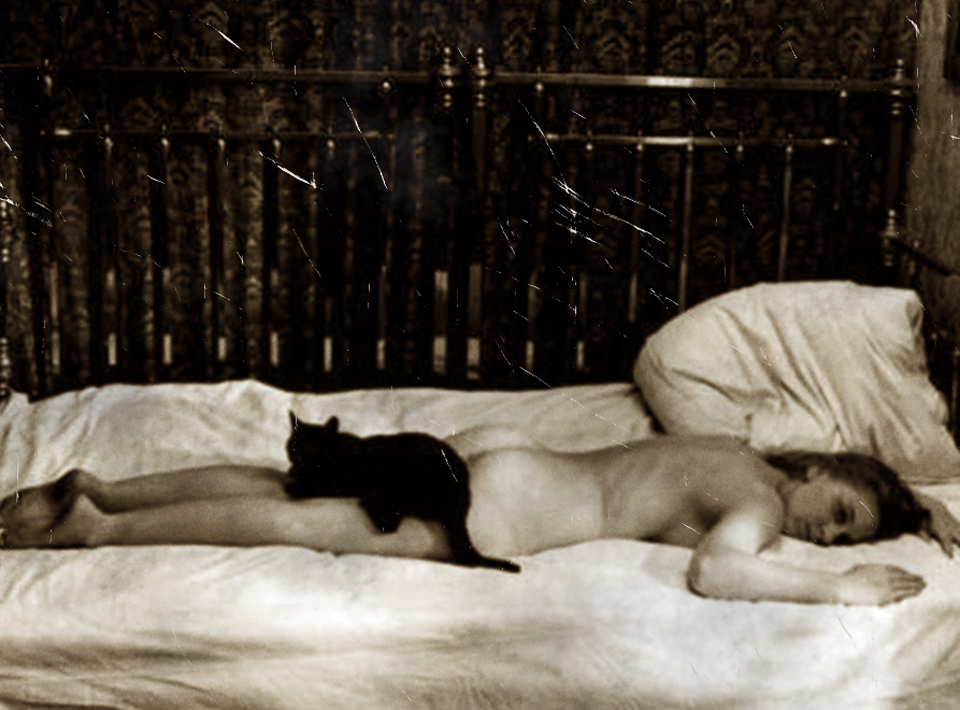
The existing hegemonic order in Europe is still reluctant to give more space to this peripheral cinema except as “works of art in galleries and museums”
EL CANT DELS OCELLS (Albert Serra, 2008)

Maybe you are familiar to the story of the Three Wise men Caspar, Melchior and Balthazar walking their long enfeebling path surching for the little child, supposed to be the savior and king of the world? Well, and maybe sometimes you asked yourself what has happen during that journey. What did they talk about, the three guys, what did they eat and where did they hang out. Have they ever been bored and have they ever thought …
OTRA HISTORIA DEL EXPERIMENTAL: CINE EN LAS PERIFERIAS DE EUROPA POST GUERRA FRÍA

NINGÚN LUGAR DONDE IR : JONAS MEKAS

Un diario, sobreviviente de campos de trabajo forzado en plena segunda guerra mundial y que termina siendo testimonio de los tiempos de posguerra bajo la visión de un migrante lituano en New York, es la voz del futuro cineasta que, como lo plasmara luego en su filmografía, tomaría la vida misma, en su devenir y azar como eje del lenguaje cinematográfico y en la apuesta por otro tipo de cine, más real y vital.
WORDS: MONIEK TOEBOSCH

Moniek Toebosch (Breda, 19 august 1948), the famous Frans Zwartjes diva, is the daughter of classical composer Louis Toebosch. A Dutch performance artist and actress, Toebosch has been working as a professor and giving workshops in her foreign country for over 40 years. She was director of Dasarts theatre of the AHK (Amsterdam College of Arts) from 2004 to 2008. Here, Max J. Pell, from Texas, shares pieces of his correspondence with her.
DESISTFILM (Stan Brakhage, 1954)
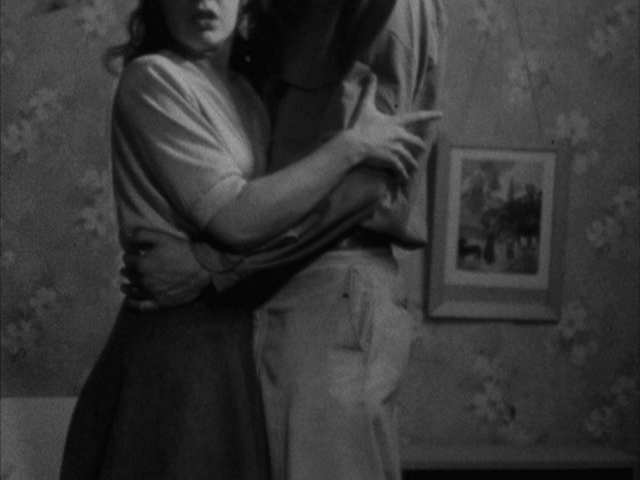
Q&A: THUNSKA PANSITTIVORAKUL

Thunska Pansittivorakul was born in Bangkok in 1973. His films have been screened at over 100 international film festivals, including Berlinale, International Film Festival Rotterdam and the Hong Kong International Film Festival. His documentary ‘Happy Berry’ won the Grand Prize award at The 4th Taiwan International Documentary Festival 2004. ‘Heartbreak Pavilion’ won the Top Award from Pusan Promotion Plan (PPP) at The 10th Pusan International Film Festival 2005.
Q&A: BILL MORRISON

Bill Morrison (Chicago, 1965) is one of the most important experimental filmmakers today, especially in the found footage vein. His first full-length feature Decasia (2002) became a milestone in this style of experimental cinema, not only for his use of special techniques in the celluloid format, but also for becoming an inspiration for future works. Decasia dwells in exploring film decay, the decomposition of the image medium, a decayed body that has something to show still. Talking about this and other works, Bill Morrison answers some questions from our staff.
LOVE EATS THE SOUL: Jan Philippe Carpio’s Hilo (2002) and Balay Daku (2007)

Uno dei modi migliori per indagare le relazioni interpersonali è analizzare i pasti. Evitando quelli solitari, frugali e scomposti, preferiamo quelli affollati e i tête-à-tête. Il regista surrealista ceco Jan Svankmajer -dal seminale Dimensioni del dialogo (Možnosti dialogu, 1982) passando per il più recente Meat Love (1989) – ci insegna che consumare un pasto in compagnia può portare a scontri e contrasti. Nella sua riflessione artistica i tavoli da pranzo e le stoviglie sono creati per generare tanto l’armonia quanto il caos, ritenendo il primo come una possibile conseguenza del secondo.
RANDOM DISCOVERIES: AN INTERVIEW WITH JAN PHILIPPE CARPIO

Jan Philippe “JP” V. Carpio (Manila, Philippines) is a self-taught writer, filmmaker and performer living in Metro Manila, Philippines. He has been making films for over a decade and has written and directed several shorts and three feature length films shot on video: Girl of My Dreams (2000), Balay Dakû (2002), Hilo (thread)(2007). He is a National Commission for Culture and the Arts Cinema Grant Recipient for the first full length film in the Ilonggo language Balay Dakû, and many other awards. He is a believer and practitioner in cross training between the different art forms, having collaborated and performed with “Actors’ Pleygrawnd” and with dancer Vanni Liwanag. He currently teaches film and mass communication subjects at St. Paul University Manila and at the School of Design and Arts College of St. Benilde. He has also become a staff member of desistfilm.
DUENDE Y MISTERIO DEL FLAMENCO (Edgar Neville, 1952)
El contacto férvido con lo bello.
HORROR HOSPITAL (Anthony Balch, 1973)

I’ve been captivated by cinema since I saw Superman split into his constituent good and evil parts to do battle in a junkyard. Growing up, I devoured anything I could, from blockbusters to Hammer Horror, to Welles and Hitchcock. As a university student, I was exposed to world cinema and the avant-garde too. But it wasn’t an academy-endorsed masterpiece that made the biggest impression on me; it was a chance encounter in the bargain bin of a cash and carry that resulted in me seeing a VHS of Horror Hospital.
WHAT HAPPENED WAS… (Tom Noonan, 1994)

Perhaps in no other art form (and other art forms may disagree with this) do cinema’s practitioners constantly choose (and it is a seldom choice) to wage war with the tyranny of audience expectations. To perpetuate the tyranny of the regime, audiences usually possess five (of many) insidious weapons – immaturity, indifference, arrogance, laziness, distraction – which cinema’s practitioners engage with experience, involvement, humility, dedication, focus. These perpetual wars seem to stem from practitioners and audiences differing perceptions of cinema and its uses. And it is here, on one of the many battlefields of perceptions, where Tom Noonan’s What Happened Was … wages its delicate and covert war.
THERE WILL BE BLOOD (Paul Thomas Anderson, 2007)

I won’t bore you with the milkshake. I was asked to write on a film that had changed my life, and while I came here planning to write about Vertigo, I realized that while it had changed my life—perhaps in ways that I cannot even articulate to myself—it had never inspired me to write poetry. There Will Be Blood has.
SINDROME ASTENICA (Kira Muratova, 1989)

Il pubblico che abbandona la sala dopo aver assistito senza troppo interesse all’ennesimo grande capolavoro russo incompreso è un flusso veloce, impaziente e ignorante che percorre le tube del mondo, il seme instupidito che scorre nelle sue visceri. Il film nel film a cui assistiamo anche noi spettatori di secondo grado è il primo dei due brani di Sindrome Astenica, l’opera che costò alla regista russa Kira Muratova il bando in piena perestroika, unico film ad essere censurato in quegli anni dal Goskino, il Ministero del cinema sovietico.
JE VOUS SALUE, SARAJEVO (Jean-Luc Godard, 1993)

Je Vous Salue, Sarajevo is a heartfelt lament on the history of mankind, war, and the art of living. Never had Godard been so poetic; never had his poetry been so tragic, as if sadness permeated everything about what’s human. It is about Sarajevo, the Bosnian war, the Srebrenica massacre, at the time. But it is about war, about the true nature of mankind. A tragic truth that is present among us.
ACCIONISMO VIENÉS: LA VIDA EXTREMA COMO ARTE Y SU PROTAGONISTA MÁS RADICAL, OTTO MUEHL

Cuando Peter Burguer sostiene, sobre los movimientos futuristas, surrealistas y dadaístas de comienzos del siglo XX, que “la vanguardia niega la separación del arte respecto a la praxis vital”, quizás la frase cobra más carga emocional a través del grito, la protesta y lo radical como lo manifestado por los exponentes…
LA PASIÓN DE LOS CUERPOS. ORKIESTRA (ZBIGNIEW RYBCZYNSKI, 1990)
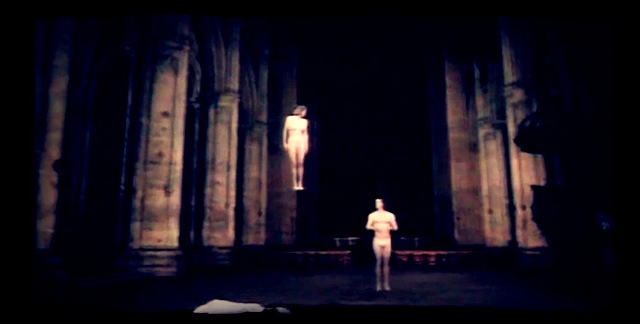
La historia de la representación humana ha sido siempre la de la representación del cuerpo. A falta de otras herramientas, su materialidad orgánica ha servido recurrentemente como ejemplo y metáfora de todo aquello circunscrito al orden de lo invisible de una existencia. ¿Esencia? ¿Espíritu? En cualquier caso, dejando al margen lo anecdótico de la denominación que quiera darse, no hubo incidencia alguna mientras escultura y pintura reinaron en el mundo del arte. La palpable solidez que ambas ofrecían como soporte para las imágenes encarnadas logró mantener vinculadas la realidad de su representación.
EL MOTOR BIOLÓGICO/EL CUERPO MECÁNICO: ANOTACIONES SOBRE FRANS ZWARTJES
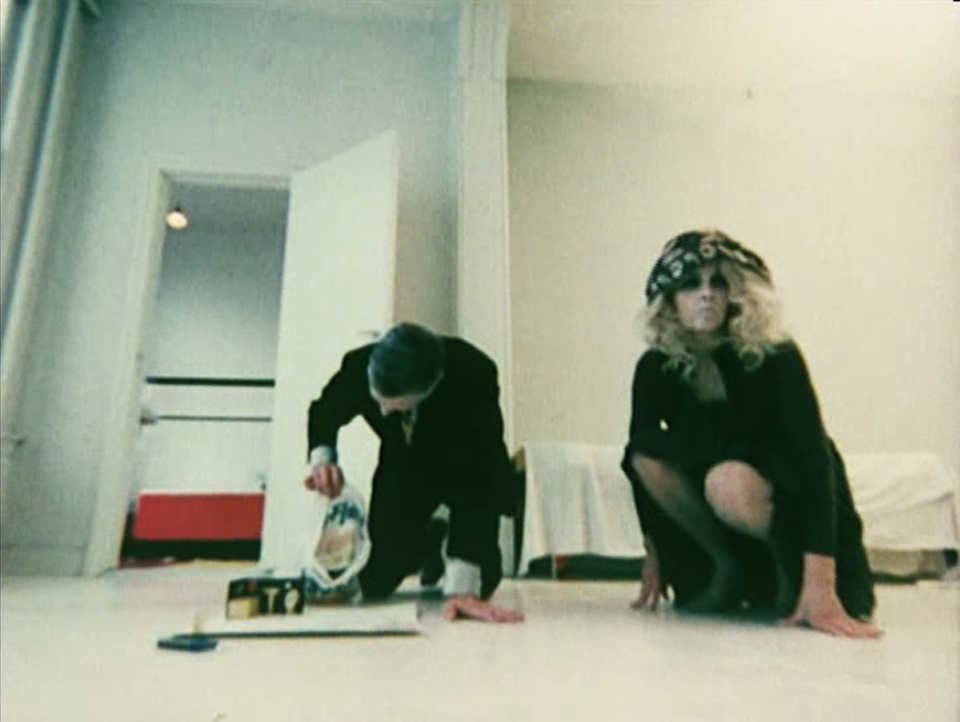
Extremadamente visceral, como la ópera, la génesis de la obra del cineasta holandés Frans Zwartjes y su posterior incubación se circunscriben en un periodo post guerra donde la escisión del comportamiento humano frente al materialismo de un neoliberalismo incipiente significaba la búsqueda de nuevas formas de expresión, tanto internas como externas.
MALCOLM LE GRICE’S ‘BERLIN HORSE’
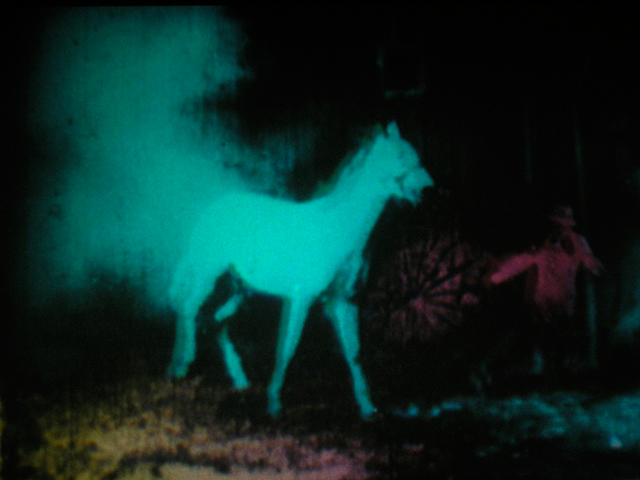
Malcolm Le Grice’s canonical 1970 avant-garde film Berlin Horse was his first full-length experiment with manipulation of the image. The film is essentially combined in two parts. The first, a small sequence of footage of running horses, intially shot in 8mm colour, later refilmed in 16mm black and white, and the second part, segments from an early film The Burning Stable (1896). Both sections were treated by Le Grice with the same process. His black and white footage was subjected to multiple superimposition using colour filters, creating a fluid ever-changing solarized image. He describes the effect of this process as ‘[working] in its own time abstractly from the image’.
Issue 002
Film reviews from our main dossier: Underground, independent and experimental Japanese cinema (and more).UNDERGROUND JAPANESE CINEMA AND THE ART THEATRE GUILD

The birth of ATG (Art Theatre Guild of Japan) in 1961 marked an epoch in the distribution of experimental films and art films from all over the world, which had hardly any chance of being shown in commercial theatres. In April 1962, ten Art Theatres were established nationwide to screen the films ATG distributed…
LOS FANTASMAS DE NOBUHIKO OBAYASHI

Si en Entreacto, la primera película de René Clair de 1925, el raccord entraba en un periodo de desahucio, siendo objeto de ruptura surreal que nacía como argucia política y de protesta frente a un canon de narratividad, explotando así un lado de felicidad y burla, para Nobuhiko Obayashi la muerte del raccord es también un vehículo para el humor, el detonante para que sus personajes confirmen que son los bufones de lo “real”, cuestionando su materialidad y mutando en posibles fantasmas…
SWIMMING IN A SEA OF IMAGE: ABOUT JAPANESE CINEMA IN 2012

In 2012, the Japanese cinema scene seems to be designed with a similar pattern to the past. While TV movie-series features, Japanimation and live-action movies from comics continue to be made and to be shown in the multiplexes, famous directors like Takeshi Kitano, Kiyoshi Kurosawa, Takashi Miike and Koji Wakamatsu continue to make their own films, and younger filmmakers are acclaimed in the international festival circuit, like Naomi Kawase, Nobuhiro Suwa, Hiroaki Koreeda, Shinji Aoyama, Sion Sono and recently the younger Katsuya Tomita (“Saudade”).
FILMED RITUALS: ZERO JIGEN INCARNATES ON SCREEN

Gishiki (Oshima, 1971), translated to The Ceremony for its theatrical release in English-speaking countries, framed its narrative around traditional rituals practiced in Japanese culture. In Oshima’s film, these ceremonies marked occasions that brought together members of the central family who witness their family tree collapse as their stories unravel over the span of a lifetime. The word gishiki, the title of the film, was a term often used, by the news media and the artists themselves, for the activities of the Japanese avant-garde in the 1960s. Performance artists, dancers and filmmakers enjoyed ceremonial rituals as a remarkably unrestricted form of artistic expression. Hijikata Tatsumi and Ohno Kazuo’s Ankoku Butoh [Dance of Darkness] were described as rituals in early reviews, and their inaugural performance of Kinjiki [Forbidden Colour] in 1959, a dance interpretation of Mishima Yukio’s novel where a chicken was sacrificed, certainly evokes a liturgy from a bygone era.
PATRIOTISM (Yukio Mishima, 1966)

I find myself wondering if Yukio Mishima ever read the work of Sylvia Plath, or if she was at all familiar with his. In The Bell Jar, Plath’s suicidal protagonist, Esther Greenwood, believes that the Japanese “disemboweled themselves when anything went wrong…in one quick flash, before they had time to think twice, they would jab the knives in and zip them round…their stomach skin would come loose, like a plate, and their insides would fall out, and they would die…It must take a lot of courage to die like that”
TOKYO DRIFTER (Seijun Suzuki, 1966)

“Where is he,/that vagabond,/always drifting,/always alone/… The drifter from Tokyo…” Flashback eleven years earlier, and Tetsuya Watari, the Drifter, Tetsu, sings the theme song himself (1). For me, it’s a piece of found poetry, its lines forming an epic of universal Film Noir themes: “And I’m a drifter who walks alone/I know not where my grave will be…” It meanders through Suzuki’s pop yakuza labyrinth in a kind of mournful counterpoint.
IL SE PEUT QUE LA BEAUTÉ AIT RENFORCÉ NOTRE RÉSOLUTION (Philippe Grandrieux, 2011)

Las mejores cualidades de las personas están ocultas dentro de sí mismas. Los países que han vivido bajo una larga tradición de regímenes totalitarios han visto cómo se utilizaba cada una de sus formas artísticas para contenerlas férreamente. No nos referimos a pensamientos o formas sofisticadas de la razón, sino a esos gestos y sentimientos que son capaces de acercar las diferencias entre seres humanos desde cierta lógica de la sensación.
NABURU BAGU O CÓMO DESLINDAR DE GODARD: LA MENTIRA DE LA NUEVA OLA JAPONESA

En la historia del cine, el caso japonés de finales de los cincuenta y sesenta tiene una ascendencia singular. A diferencia de otras sensibilidades de ruptura como lo fueron la Nouvelle Vague en Francia o el Cinema novo en Brasil, la denominada Nueva ola japonesa o Nubero Bagu fue resultado del esfuerzo de las productoras más conocidas por reconciliarse con las taquillas y el público juvenil. Un sobrenombre periodístico.
NANAMI: THE INFERNO OF FIRST LOVE (Susumu Hani, 1968)

In “Nanami” The Inferno of First Love”, Hani shows an artistic devotion to exploring and communicating the experiences of “small” moments and “insides”. Hani also shows that like his protagonists Shun and Nanami, he himself is very much willing to pay the high price for constant curiosity and closing the distance between life and those who struggle to live it.
DESISTFILM: OUR TOP FILMMAKERS

MATERIA, RITMO, MÁSCARA, PERSPECTIVA E INCONSCIENTE ÓPTICO EN CINCO PIEZAS DE TOSHIO MATSUMOTO

En cuanto la imagen se separa del soporte, de la materia en la que venía inscrita, embebida, su modo de memoria se transtorna y redefine por completo. Su antigua condición de memoria de archivo, repositoria, dependía justamente de su capacidad de absorber las cualidades propias de lo inerte: ella podía ejercer su fuerza conmemorativa, restitutoria, por la condición suficientemente inmutable de la materia a la que estaba indisolublemente apegada. Tan pronto como esa adhesión y su indisulubilidad se alivian, lo que se cumple en la nueva forma de producción técnica, las imágenes dejaran de oficiar como eficaces memorias de consignación…
COUP D’ETAT (Kijû Yoshida, 1973)

Yoshishige Yoshida was one of the most important figures of the “Japanese New Wave” (Nuberu Bagu). He is lesser known than his colleagues Nagisa Oshima and Masahiro Shinoda but he played a major role in the creation of the New Wave at the Shochiki studios in early 60s. In 1969 he directed his masterpiece Erosu purasu Gyakusatsu (Eros Plus Massacre), a historical drama that is set in the 20s. This is the first part of a trilogy that is composed by historical political films.
Q & A: CHRISTELLE LHEUREUX

“Yes, the white disease is eating us everyday. Time is changing everything, everything disappears and fades and it’s ok, that’s life… The question is more to be aware of what we are loosing and what we are getting new. Our spirituality is changing super quickly, even in just one generation. I think cinema has a lot to do with that question of time, because this medium deals mostly with memory”.
Q&A: JOANA PREISS

“Sibérie is one of the main characters of the film for all the reasons you describe. It’s like a mirror with of the raw and honest meditation of love, it’s a perfect décor for this “triste geographie des sentiments”, and the train helped us to have this kind of lonely feelings, increased by our “huis clos” inside the Trans cabin, in front of the big window, on the exterior as a big travelling shot with the immensity rugged inhabited landscapes”.
TOKYO SENSO SENGO HIWA (Nagisa Oshima, 1970)

Nagisa Oshima remains one of the best-known representatives of the Japanese New Wave (Nuberu Bagu). During the 60′s he was particularly active cinematically and he expressed his political beliefs through his films. The radical changes that occurred at the Japanese society during the same period could not leave him untouched.
A GUSHING PRAYER (Masao Adachi, 1971)

Masao Adachi’s A Gushing Prayer (1971) figures the possibility for lived contradiction. The film was produced in the wake of the American occupation of Japan and its forced assimilation of Japanese society to Western values, yet it offers a cross-examination of the struggle against the occupation. This structuring is typical of Adachi’s work and thus, despite the historical specificities of this film, A Gushing Prayer is a prayer for us all. It asks: how is it possible to escape the perceived totality of history and of capitalism?
EXTREME PRIVATE EROS LOVE SONG (Kazuo Hara, 1974)

This film documents the complex relationship between Kazuo Hara and his ex-wife Takeda Miyuki. He and his current partner (the sound recorder and producer of the documentary) follow Miyuki as she flouts the conventions of Japanese society with a mercurial zeal; a lesbian affair, conceiving a child with an African-American GI, setting up a refuge for women and challenging local gangsters, resulting in her being assaulted.
BRANDED TO KILL (Seijun Suzuki)

At almost exactly the same time that Sean Connery’s crass, bloated 007 was undergoing plastic surgery to look more Japanese, Seijun Sujuki’s Branded to Kill debuted on Japanese screens, featuring Goro Hanada, an assassin whose licence to kill was entirely of his own making and who seemed determined to prove Fritz Lang right and Ian Fleming wrong.
Q & A: RAÚL PERRONE

“El cine es como una mujer, a la que tengo que enamorar todo el tiempo’’ / “Cagarse en el formato: si lo que tenés para decir no se sostiene en VHS, tampoco se va a sostener en Beta, en Super 8, en 16 o 35 mm ni con una cámara de fotos”. Algunos puntos que tengo en cuenta a la hora de filmar”.
LES CHANTS DE MALDOROR DE SHUJI TERAYAMA

En los cantos de Shuji Terayama no existe la fijación malsana hacia el “espectador”. Si en el río poema de Lautreamont el lector es un ser al que hay que trastocar y atormentar, una pieza conmovible de esa maquinaria infame de ruptura, revolución y disección (el lector abyecto como aquel que narra), en la versión de los Cantos de Maldoror del cineasta japonés, el espectador cumple más un rol de voyeur, ubicado justo en la cuarta pared, en frente de la puesta en escena teatral, de la performance de actores o personajes envueltos en una extraña relación de simbiosis con insectos o animales.
MENTE, CUERPO Y FRAGMENTOS

Para la civilización griega, mientras la persona vivía tenía que cuidar al cuerpo igual que a la mente (1). De acuerdo con Platón, Sócrates dice en Leyes: “Los que honran mejor a los dioses por medio de la danza son también los mejores en el combate”. No voy a detenerme en la cultura griega (los occidentales la conocemos: al menos en mi país, la Argentina, los manuales explican el origen de la Historia del mundo a partir de Grecia), pero sí voy a tomar esta idea de “armonía” (1) griega, de unidad entre cuerpo y mente para ver si funciona, o no, y cómo, en el cine, en ciertas corrientes y películas contemporáneas.
BODY, MIND AND PIECES

In Greek civilisation, the citizen had to take care of body as well as mind (1). According to Plato, Socrates says in Laws: “Those who worship the gods through dance are also the best in combat.” I will not dwell on Greek culture (Western people know a little about it; at least in my country, Argentina, there are manuals that explain the Ancient Greek origins of Western History), but I will take this idea of “harmony” (2) from the Greeks, the unit of body and mind, to see if and how it works in films and in certain contemporary trends.
Q & A: LAV DIAZ

It’s a great time for filmmaking again. You can articulate things again through cinematography. Before, with the advent of the Panasonic DVX and the P2, the lens is steady, you can’t change things unless you go for lens adapters. This time it’s free for all. The companies are coming out with great cameras. It’s a revolution. It’s up to you how you use them.
HOW STRANGE THE CHANGE FROM MAJOR TO MINOR: (THE FIRST THIRTY MINUTES OF) KIRA MURATOVA’S PASSIONS (1994)

The chaos of Passions, knowingly or not, evokes Federico Fellini. But Fellini without a centre: without ‘the crisis of the artist’ or ‘the loss of time, history and memory’ or ‘the world as it changes from one era to another’. All enthusiasms in Muratova are small, minute, obsessive, even microscopic. They spin their web wonderfully, but don’t take up so much space. This is why she uses the hinge-overlap method: it’s a lapidary style, the webs join up and combine, extending in every direction. Every which way and loose. Manny Farber used to scoff slyly at people who claimed to know what a film is about.
VIEWS AND THOUGHTS OF THE CINEMATIC WITH LUDWIG WITTGENSTEIN

In 1926-28, together with Paul Engelmann (architect, 1891-1965), Ludwig Wittgenstein designed and built a now world-famous residence for his sister Margaret Wittgenstein Stonborough (1882-1958), located in the 3rd District of Vienna. Today it houses the Bulgarian Cultural Institute. Of the usual Monday dinner hosted by Moritz Schlick (physicist, 1882-1932) during that period and the related inspirational talks, renowned as “The Vienna Circle”, there is probably no record…
A MOVIE FOR YOUR EARS: FRANK ZAPPA AND CINEMA

Frank Zappa, author of more than fifty albums ranging from raucous rock to jazz and classical. Satirist and outspoken political commentator who loathed the encroachment of the moral majority onto civic life and their subsequent interference with constitutional right to free speech. Enemy of hypocrisy and self-importance. Enthusiast of quotidian vulgarity and champion of the dense, maximalist aesthetic of composers Pierre Boulez and Edgard Varese. Forward looking futurist who envisaged a world of electronic music and internet downloads. Chauvinist, conservative and tight-fisted small businessman. Filmmaker?
RED(ISH) IS THE COLOR: ON PINKU EIGA (FIRST WAVE) AND MARXISM

Linking Marx with Japanese soft-core pornography may be a long stretch, enclosed in a single framed space of mind, where class social revolts have nothing to do with the human experience of sexuality. But there was a point of intersection between Marx’s ideas and the socialist feminist discussions of the era, and the further exploration of sexuality by obscure Pinku Eiga filmmakers, an equivalent of the American sexploitation film genre, which was in itself a response to decades of repression: The uncovered flesh as an analogy of class uprising. If Marx himself never explained per se the concepts of sexual alienation, he was clear on what “exploitation of the capitalist society” was, and how it operated in the sexual lives and attitudes of people.
Nema komentara:
Objavi komentar